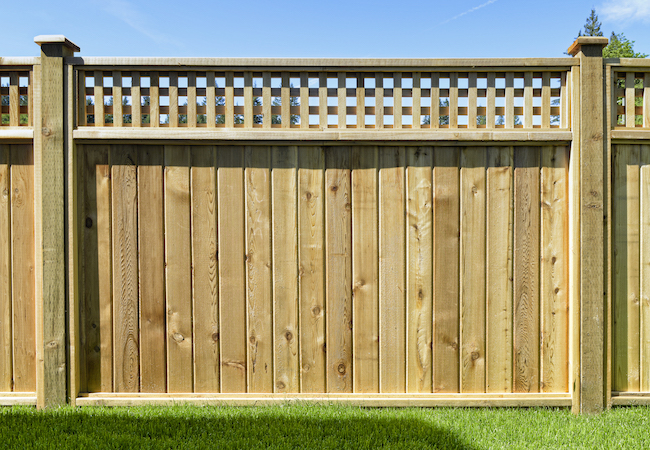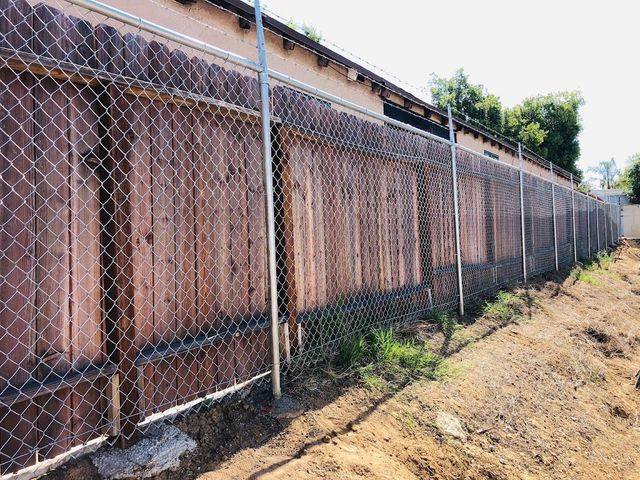All Categories
Featured
From hefty rainfall and snow to intense sun and wind, weather-related damages is one of the most common reasons of fence wear and tear. While you can not manage the weather condition, there are several methods to secure your fence from the harmful impacts of weather condition and ensure it lasts for years to come.
Wood Fences: While wooden fences are a classic option, they are highly vulnerable to wetness and parasites. To make a timber fence more sturdy, choose pressure-treated lumber, cedar, or redwood. These materials are more resistant to rot and insects. You'll still need to protect the timber from the elements with normal upkeep.
Plastic Fences: Plastic fences are highly durable and need little maintenance. They are resistant to fading, splitting, and warping, making them suitable for areas that experience severe sun, rainfall, or winter. Plastic additionally will not rot or draw in pests, using long-term defense without the demand for continuous upkeep.
Metal Fences: Wrought iron and aluminum fences are exceptional selections for their strength and resistance to wind and moisture. They are at risk to rusting over time, especially if exposed to constant rainfall or humidity. Select galvanized or powder-coated metal fencings to reduce the danger of corrosion.
![]()
Composite Fences: Integrating timber fibers and plastic, composite fencings are immune to decaying, fading, and pest damages. They offer the look of wood with less maintenance, making them a perfect option for areas with variable climate condition.
![]()
Wooden Fences: An excellent high quality wood sealant or tarnish is important to secure your fencing from the components. Be certain to reapply the finishing every couple of years to keep your fencing in top condition.
Plastic Fences: While plastic is low-maintenance, you can still safeguard it further by applying a UV protectant. These coverings help prevent staining brought on by long term sun exposure. Furthermore, use vinyl-specific cleansers to keep the surface area totally free of stains or dust build-up.
Steel Fencings: To secure steel fencings from corrosion and deterioration, think about applying a rust-inhibiting guide complied with by a safety paint developed for exterior use. Preferably, powder finish offers a resilient and long-lasting finish that can withstand harsh climate.
Wooden Fences: Clean your wood fence with a stress washer or a soft cloth and mild detergent. Examine the fencing routinely for indications of rot, splits, or insect infestations.
Vinyl Fences: Vinyl fences are easy to clean with soap and water. For harder stains, you can make use of a light bleach option or a plastic cleaner to restore the fencing's appearance. Don't forget to check for any cracks that might let water in, causing further damages.
Metal Fencings: Tidy metal fencings with a soft fabric to get rid of dust, rust, and dust. If you observe corrosion areas, eliminate them right away with a cord brush and deal with the area with a rust-resistant guide or paint to prevent it from spreading out.
Wooden Fencings: When installing wooden fencing articles, ensure they are set deeply right into the ground, preferably below the frost line to stop shifting throughout freezing temperatures. Usage concrete to secure the blog posts and stop them from being or leaning uprooted by solid winds.
Metal Fences: For metal fences, guarantee that the posts are securely anchored in concrete. This is especially crucial in regions with heavy winds or regular tornados. You might also wish to install added supporting to offer added assistance against wind anxiety.
In addition, extreme moisture from neighboring plants can bring about mold and rot in wooden fences, so maintain plants at a secure distance to permit correct airflow and water drainage.
Metal fencings should be evaluated for rust before the winter starts, and any type of influenced locations must be treated with rust-resistant products. In addition, using a coat of paint or protective coating prior to the winter sets in can assist secure your fence from ice and snow damage.
![]()
Conclusion. Shielding your fence from weather-related damage requires a mix of proper product choice, regular maintenance, and aggressive treatment. Whether you have a wood, vinyl, metal, or composite fence, the appropriate safety actions can expand its life expectancy and preserve its appearance. By adhering to these simple yet effective steps, you can secure your fence against the elements and maintain it looking fantastic for lots of years ahead.
- Pick Weather-Resistant Materials. One of one of the most efficient ways to shield your fencing is by picking the ideal product for your climate. Specific materials are extra long lasting and much better suited to withstand particular climate condition.
Wood Fences: While wooden fences are a classic option, they are highly vulnerable to wetness and parasites. To make a timber fence more sturdy, choose pressure-treated lumber, cedar, or redwood. These materials are more resistant to rot and insects. You'll still need to protect the timber from the elements with normal upkeep.
Plastic Fences: Plastic fences are highly durable and need little maintenance. They are resistant to fading, splitting, and warping, making them suitable for areas that experience severe sun, rainfall, or winter. Plastic additionally will not rot or draw in pests, using long-term defense without the demand for continuous upkeep.
Metal Fences: Wrought iron and aluminum fences are exceptional selections for their strength and resistance to wind and moisture. They are at risk to rusting over time, especially if exposed to constant rainfall or humidity. Select galvanized or powder-coated metal fencings to reduce the danger of corrosion.

Composite Fences: Integrating timber fibers and plastic, composite fencings are immune to decaying, fading, and pest damages. They offer the look of wood with less maintenance, making them a perfect option for areas with variable climate condition.
- Apply Safety Coatings. No matter the product, applying safety finishes is important in expanding the life of your fence. Coatings develop a barrier that guards your fence from moisture, UV rays, and various other environmental stress factors.

Wooden Fences: An excellent high quality wood sealant or tarnish is important to secure your fencing from the components. Be certain to reapply the finishing every couple of years to keep your fencing in top condition.
Plastic Fences: While plastic is low-maintenance, you can still safeguard it further by applying a UV protectant. These coverings help prevent staining brought on by long term sun exposure. Furthermore, use vinyl-specific cleansers to keep the surface area totally free of stains or dust build-up.
Steel Fencings: To secure steel fencings from corrosion and deterioration, think about applying a rust-inhibiting guide complied with by a safety paint developed for exterior use. Preferably, powder finish offers a resilient and long-lasting finish that can withstand harsh climate.
- Normal Cleansing and Examinations. Proper cleansing and routine inspections are important to keeping the honesty of your fence. Build-up of mold, particles, and dirt can trap wetness against your fencing and trigger long-lasting damages.
Wooden Fences: Clean your wood fence with a stress washer or a soft cloth and mild detergent. Examine the fencing routinely for indications of rot, splits, or insect infestations.
Vinyl Fences: Vinyl fences are easy to clean with soap and water. For harder stains, you can make use of a light bleach option or a plastic cleaner to restore the fencing's appearance. Don't forget to check for any cracks that might let water in, causing further damages.
Metal Fencings: Tidy metal fencings with a soft fabric to get rid of dust, rust, and dust. If you observe corrosion areas, eliminate them right away with a cord brush and deal with the area with a rust-resistant guide or paint to prevent it from spreading out.
- Enhance Your Fencing with Appropriate Installation. Proper installation is one of one of the most reliable methods to avoid weather-related damage. A fencing that is badly set up is most likely to collapse or suffer damage throughout storms.
Wooden Fencings: When installing wooden fencing articles, ensure they are set deeply right into the ground, preferably below the frost line to stop shifting throughout freezing temperatures. Usage concrete to secure the blog posts and stop them from being or leaning uprooted by solid winds.
Metal Fences: For metal fences, guarantee that the posts are securely anchored in concrete. This is especially crucial in regions with heavy winds or regular tornados. You might also wish to install added supporting to offer added assistance against wind anxiety.
- Trim Trees and Bushes Near Your Fence. Disordered trees and hedges can trigger considerable damage to your fence, particularly throughout heavy tornados or high winds. Tree branches can scuff versus the fence, triggering scratches, and their roots can destabilize the articles. Keep vegetation trimmed and ensure that tree branches are not leaning on or near the fencing.
In addition, extreme moisture from neighboring plants can bring about mold and rot in wooden fences, so maintain plants at a secure distance to permit correct airflow and water drainage.
- Winterize Your Fence. Take added precautions to protect your fence from freezing temperature levels, snow, and ice if you live in a location with harsh wintertimes. For wooden fencings, ensure the base of the posts rises over ground degree to stay clear of water buildup, which can break the timber and ice up. Take into consideration utilizing a moisture obstacle around the base of the posts to keep them dry throughout the winter season.
Metal fencings should be evaluated for rust before the winter starts, and any type of influenced locations must be treated with rust-resistant products. In addition, using a coat of paint or protective coating prior to the winter sets in can assist secure your fence from ice and snow damage.
- Post-Storm Repairs. Storms can trigger prompt damages to your fence, including fallen branches, busted messages, or dislodged panels. After each tornado, examine your fencing completely to look for any kind of visible damage. Address minor problems promptly before they come to be larger, a lot more expensive repair services. If your fencing has actually been severely harmed, it's a good idea to consult an expert for fixings to guarantee it continues to be structurally audio.

Conclusion. Shielding your fence from weather-related damage requires a mix of proper product choice, regular maintenance, and aggressive treatment. Whether you have a wood, vinyl, metal, or composite fence, the appropriate safety actions can expand its life expectancy and preserve its appearance. By adhering to these simple yet effective steps, you can secure your fence against the elements and maintain it looking fantastic for lots of years ahead.
Latest Posts
Find Budget-Friendly Auto Repairs with Montclare’s Limited-Time Service Specials
Published en
1 min read
Find Montclare Auto Repair’s Most Popular Car Care Solutions and Why Drivers Choose Them
Published en
1 min read
Check Out Exceptional Vehicle Maintenance Services in Chicago – Quality Service Today
Published en
1 min read
More
Latest Posts
Find Budget-Friendly Auto Repairs with Montclare’s Limited-Time Service Specials
Published May 28, 25
1 min read
Find Montclare Auto Repair’s Most Popular Car Care Solutions and Why Drivers Choose Them
Published May 28, 25
1 min read
Check Out Exceptional Vehicle Maintenance Services in Chicago – Quality Service Today
Published May 26, 25
1 min read